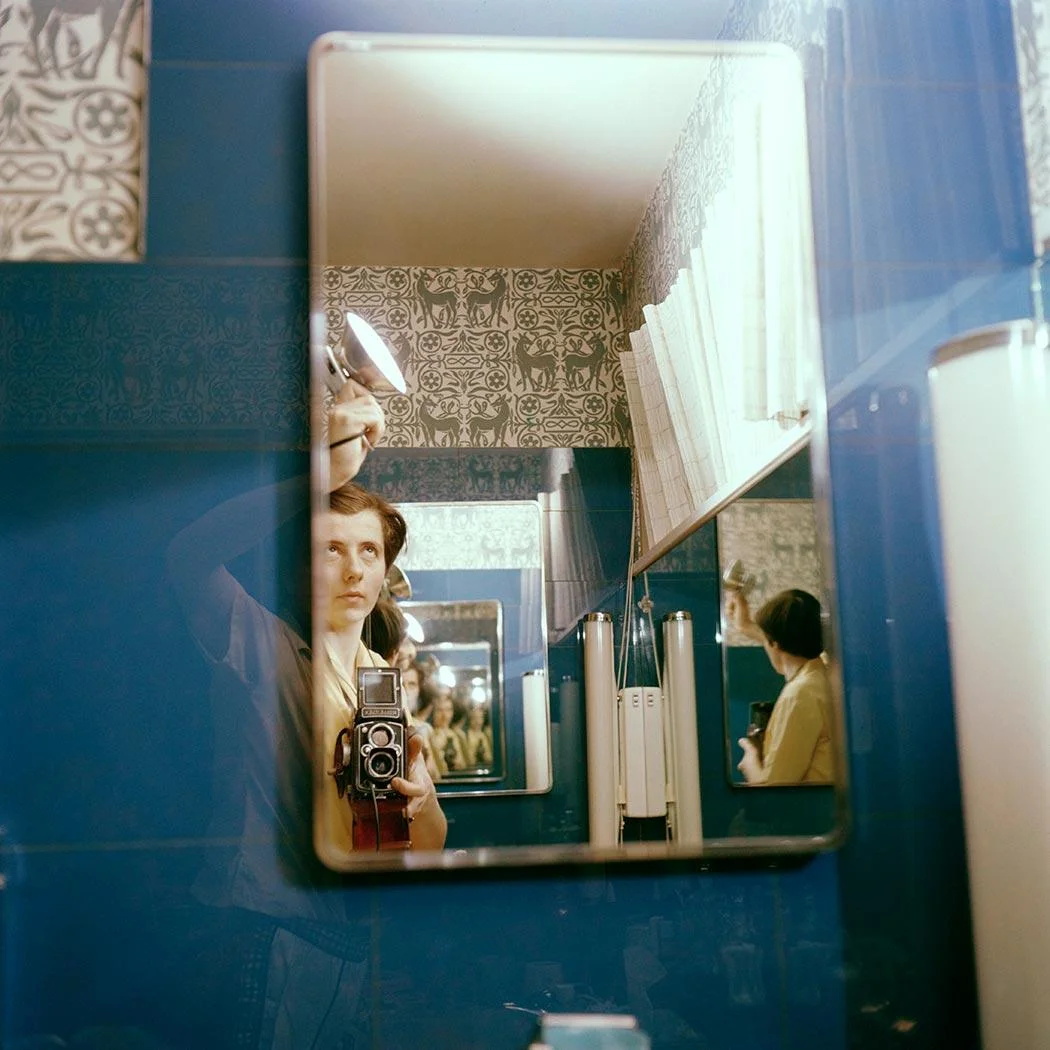THE WOMAN in the SHADOWS
The work of artists gives us a window that reaches beyond space, reason, and even the grave. When art speaks to us, we feel a connection with the artist in a way that allows us to peer through their eyes for a fleeting moment; we seek out human connection and understanding of the artists past, intentions, and morals, as if to better understand our own. Art challenges us to see the world a little differently and moves us to create work of our own that will inspire the next generation long after we're gone. While we often seek it out in museums, record stores, live performance halls, or art galleries, sometimes, it seeks us out. In the story of John Maloof, a street photographer and historian, the work of one brilliant and undiscovered photographer quite literally fell into his hands and sent him on a journey to uncover the woman behind the photographs.
“This is the story of Vivian Maier, a strange woman with a secret talent and a veiled past.”
In search of material for his research project, John Maloof, purchased an unremarkable box of negatives from a Chicago Auction. As he flipped through the images, he quickly realized that, while they were unsuitable for his project, the images were magnetizing in their own way. He studied the collection of photographs night after night and found himself overwhelmed with curiosity about the woman behind the images, Vivian Maier, only to find out that (by all accounts) she was virtually a ghost.
Her striking black and white street photography depicted over four decades of Chicago city life. The photographs revealed old buildings that had long since been changed (or no longer stood at all), hardened faces of soldiers and factory workers weary from the war, young soda-pop love, glamorous nightlife, eerie urban decay, childhood innocence, and a collection of solemn self-portraits. The images were often taken secretly from below, giving the subjects a towering, larger-than-life presence, frame-by-frame, capturing accusatory eye contact, glowing affection, and a series of unsuspecting reactions.






As Maloof explored the contents of the auction box, he found that the images in his possession were just the beginning. Over the course of a few years, Maloof conducted a personal investigation. Discovering nothing about Maier online, he tracked down the people in the pictures and visited the places she lived and frequented. After a short time, Maloof was handed the key to her storage unit where he found over 100,000 undeveloped photos, curious nick knacks, newspapers, home videos of the children she nannied, tape recordings of her voice, and boxes of collectibles.
As he organized her belongings and tried to make sense of their significance, Maloof found clues that led him to the people she knew. He began speaking to anyone and everyone that knew Maier, determined to uncover the woman's secret past, and to understand why she chose to live her whole life building the portfolio of a prolific photographer without ever sharing her photographs.
When describing Vivian Maier, the children she looked after years ago use words like tall, unusual, closed, and strict. Her style is described as that of “women factory workers in the soviet union in the 50s.” She rode a motorized bicycle and was never seen without her treasured Rolleiflex hanging around her neck (pictured below). Her former employers remember her having few friends, tight lips, and an odd accent which she claimed was French and a linguist (that Maloof consulted) insisted was fake. Her ever-locked bedroom was filled with Newspapers that contained dismal headlines. “Murder!” “suicide!” and “abuse!” screamed from the pages as the newspapers teetered in tall, dense, stacks, causing the floor to sag under their weight. As one acquaintance surmised, Maier appeared to obsessively collect newspapers with troubling headlines as if to reveal the folly of all humankind.
Even after years of research, a lot is still unclear about Vivian Maier; what prevented her from sharing her brilliant work with the world, what caused her to remain autonomous, what traumas she experienced in her own life that kept her from forming close personal connections, why she chose to lie about her name, where she was born, and most of all, why she kept her photographs a secret. All we have are snapshots and glimpses into her life that paint a fragmented history, pieced together by the people that knew her.
What is clear is that Maier had a gift for photography that far surpassed her time. The woman was highly complex, emotionally dark, private, self-possessed, and inquisitive. Among her vast photographic collection, Maloof discovered thousands of undeveloped film rolls, hundreds of self-portraits with creative use of mirrors, reflections and shadows, and street captures that expose raw human emotions during a time of political and social turmoil. Her photography and all the contents of her storage unit combine to paint a picture of a woman with a deeply rooted sense of curiosity, a compulsion for self-preservation, and a deeply-rooted loneliness that persisted through her years as a nanny.









Vivian Maier’s photography is a moving and raw depiction of post-war Chicago and solo travels overseas. After years of outreach, her work is finally being celebrated for its rare brilliance and can be viewed in prominent displays at galleries in New York, L.A., London, Germany, and Denmark for a new generation of photographers to enjoy.
If you’re interested in learning more about Vivian Maier, we encourage you to watch this Netflix documentary, Finding Vivian Maier.
Note: All images in this story were taken by Vivian Maier, and sourced from http://www.vivianmaier.com/











